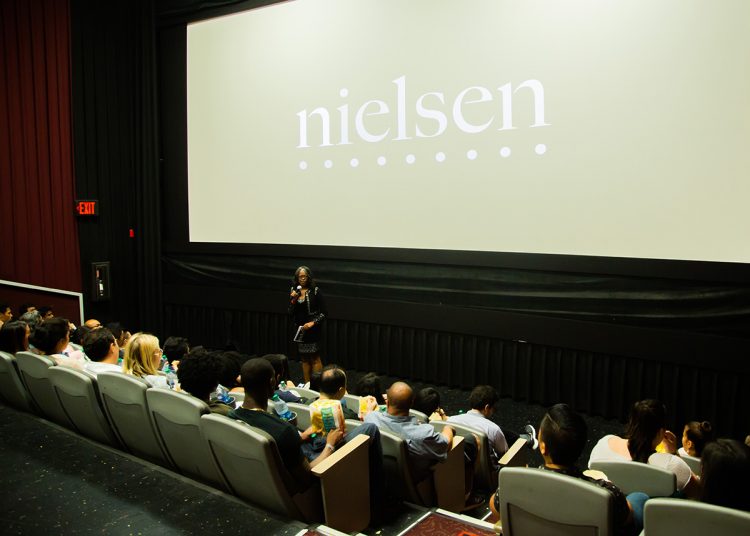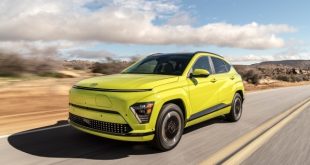By Jennie L. Ilustre
Asian Americans continue to be the nation’s fastest-growing minority population. At 20.5 million, they represent 6% of the total U.S. population. With immigration and rising birth rates, the U.S. Census projects they will reach 25.7 million by next year. Uniquely diverse (they represent 40 countries of origin), Asian Americans will outnumber Hispanic Americans by 2055, according to U.S. Census Bureau projections.
Asian Americans are not only increasing in numbers. A recent Nielsen report notes “they are expanding their influence and voicing their preferences as customers, audiences and voters like never before.”
With “Crazy Rich Asians” on track to hit $100 million at the box-office soon, “crazy rich” is trending as this year’s new word. Maybe Asian Americans do not as yet belong to the uber wealthy class (crazy rich, if you will) – but they are definitely “the richest ethnic minority” in the U.S. today.
Richest Ethnic Minority
Consider the 2018 Nielsen Report, “Asian Americans: Digital Lives and Growing Influence.” Among its findings, based on surveys and data from Asian American and Pacific Islanders (AAPI) panels are:
1. Asian Americans are the richest ethnic minority of the U.S. population, with a household median income of $74,829. Their median household income is nearly 40% higher than the national median income of $53,657.
2. Indian Americans (immigrants from India or their American-born offspring) have the highest household income among the Asian American group at $101,591. They are also the first U.S. ethnic minority with a median income of more than $100,000.
They are followed by Filipino Americans ($82,839); Japanese Americans ($70,261); Chinese Americans ($69,586), and Pakistani Americans ($62,848).
The median household income for Asian Americans is highest in the Northeast at $78,592. It is followed by the West ($75,810); the South ($75,771), and the Midwest ($62,420).
3. Asian Americans’ buying power has increased by 257% since 2000 – the fastest of all racial groups. Last year, the group’s buying power was $986 billion, about 6.8 percent of the U.S. total.
By 2020, the current buying power of Asian Americans is expected to increase 32% to $1.1 trillion. That translates to 6.7% of the U.S. total buying power.
4. Of the 87 U.S. startup companies valued at over $1 billion with the potential to become publicly traded on the stock market, 19 were founded by Asian American immigrants.
5. Asian Americans outpace the general population in ownership of all three major Internet personal devices: smartphones, household computers and tablets. Their online purchasing habits outpace the general market as well.
Myths about Wealth
Be that as it may, Asians and Asian Americans will be among the first to say, “Money doesn’t buy happiness.” They know it’s a myth. They are apt to cite family and friends, religion or faith, career, advocacy work, philanthropy and volunteerism as sources of their happiness.
1. “Money is actually the least thing that makes you happy,” “Crazy Rich Asians” director Jon M. Chu told Filipino American columnist Ruben V. Nepales of the Philippine Daily Inquirer. He said in making the movie their team’s goal was not to make it about just rich people. The movie “is actually about Rachel Chu, who’s not rich at all,” he added.
2. Not all Asian American and Pacific Islanders are wealthy. Asian American advocacy groups point out that some subgroups like the Hmongs, for example, belong in the poverty level.
This is a critical fact, they insist. The advocacy groups stress the subgroups should not be undercounted in the U.S. Census (or worse, not counted at all) to prevent being underserved in the allocation of federal benefits.
Consumer Power
Under the heading, “Asian-Americans Have Substantial Wealth and Buying Power,” the Nielsen report noted: “As for buying power, Asian-Americans have the third-largest spending prowess of all multicultural groups, at $825 billion. Put another way, Asian-American buying power in the U.S. is greater than the economies of all but 17 countries worldwide, and slightly greater than the gross domestic product (GDP) of Turkey, according to the Selig Center for Economic Growth, The Multicultural Economy 2015.
Nielsen’s sixth report on the culturally diverse and dynamic Asian American consumer looks at a coast-to-coast view of shopping habits, a screen-by-screen view of media habits, and city-by-city view of Asian American-owned businesses. “Young, empowered, and growing, Asian-Americans’ economic clout will continue to expand,” it noted.
The report pointed out that Asian American consumers “are expanding their influence and voicing their preferences as customers, audiences and voters like never before. Thus, understanding Asian Americans has become more important for any organization servicing the American public.”
(Download a copy of Asian-Americans: Digital Lives and Growing Influence at http://nlsn.co/6012Dd44Q | #APAHM #NielsenDIS)
Millennial Digital Influencers
The Nielsen report highlighted the success of Asian Americans as social media influencers and content creators with mainstream appeal. It added: “Within this diverse group is also a strong and powerful Asian American Millennial generation whose profile differs from their elders and from their non-Hispanic White Millennial counterparts. Asian Americans are also capturing the spotlight and becoming influencers as food bloggers, social media personalities, and sports stars.”
The report mentioned Social media celebrities like Lilly Singh and Michelle Phanhave, who have built massive audiences by creating video content on YouTube. Both have attracted ethnically and racially diverse fan bases, making them attractive to advertisers, the report added.
The report points to the growing role of Asian Americans in determining the content Americans consume, especially when it comes to food. The group is 124 percent more likely to use Yelp, 92 percent more likely to read and contribute to blogs, and 51 percent more likely to read restaurant reviews compared to non-Hispanic whites, according to the report.
“We are the ones who are reviewing the products,” said Mariko Carpenter, Nielsen vice president of strategic community alliances. “Word of mouth is the most influential piece of marketing before somebody makes a purchase. So if you get Asian Americans to really like your product, then you have ambassadors that are really, really powerful.”
The report also focused on Asian Americans being at home with the use of technology. It found that those consumers were “predictive adopters” of new media and technology. Ninety-four percent of AAPI households own a cellphone, compared to 86 percent of the total U.S. population. Asian Americans age 18 years and older were more likely than the general population to use smartphone apps like Yelp, Lyft, Uber, Venmo and WhatsApp.
That comfort zone also applied to online shopping, according to the report: “Asian Americans spent an average of $1,151 on the internet in the last 12 months, 20 percent higher than non-Hispanic whites. Compared to 2016, there was significant growth in spending on skin care products, cosmetics, hair care and kitchen gadgets.”
Diverse Group
Asian Americans are a very diverse group. They represent over 40 countries of origin. Chinese Americans are the largest group, at 20% of the Asian American population. Others are South Asian Indian Americans (17%), Filipino Americans (16 %), Vietnamese Americans (9%), Korean (Americans 9%) and Japanese Americans (6%).
According to the report, New York and Los Angeles metropolitan areas are major home bases for this diverse group of consumers. In 2014, 12% (almost 283,000) of recent Asian immigrants settled in the New York metropolitan area, and 8% (206,000) settled in the Los Angeles area. In fact, more than half (63%) of recent Asian immigrants live in 16 U.S. metropolitan areas. Smaller cities, however, including Phoenix, Minneapolis and Detroit, have also seen an influx of Asian American immigrants.
 Asian Fortune Your source for all things Asian American
Asian Fortune Your source for all things Asian American





